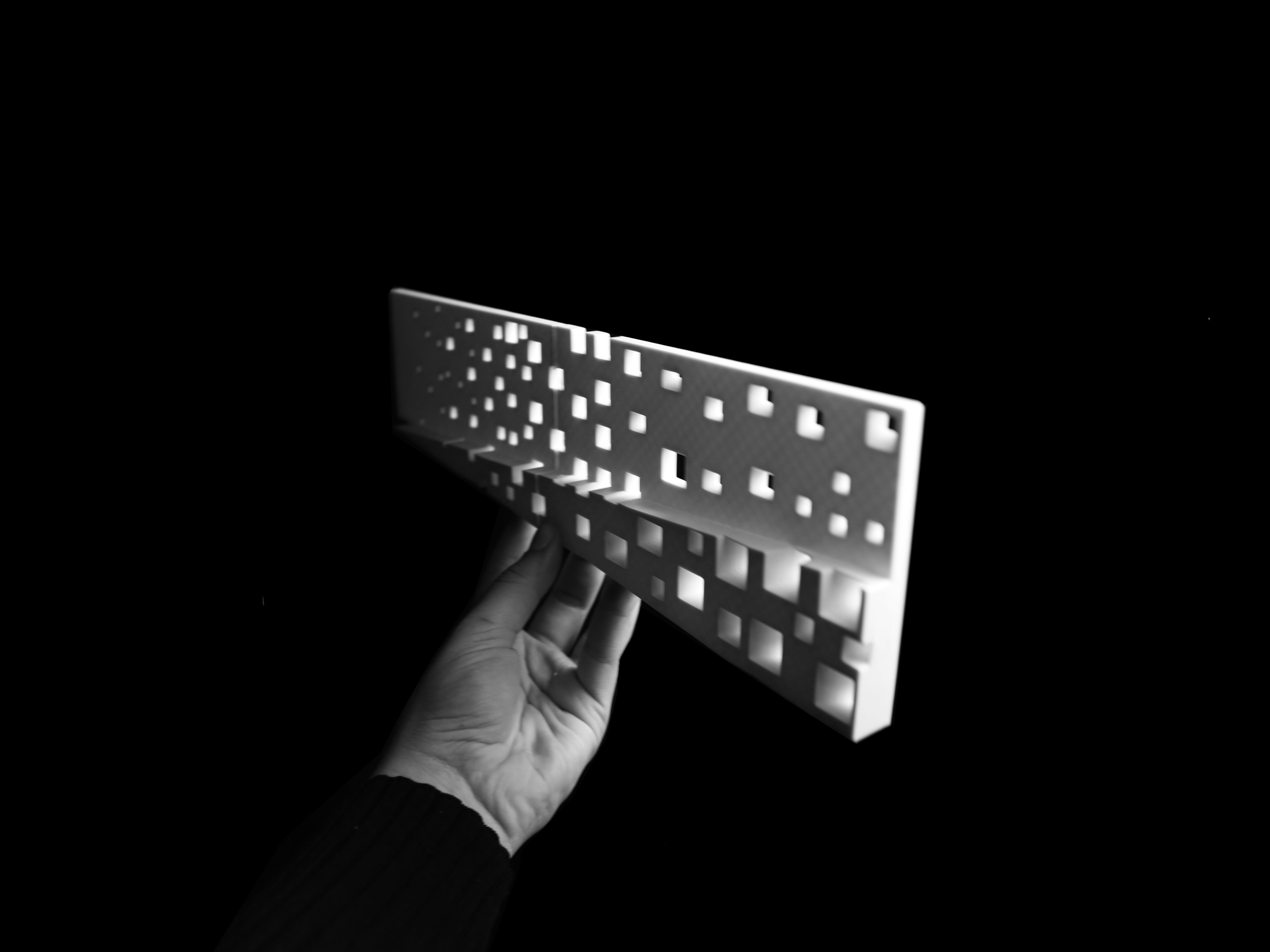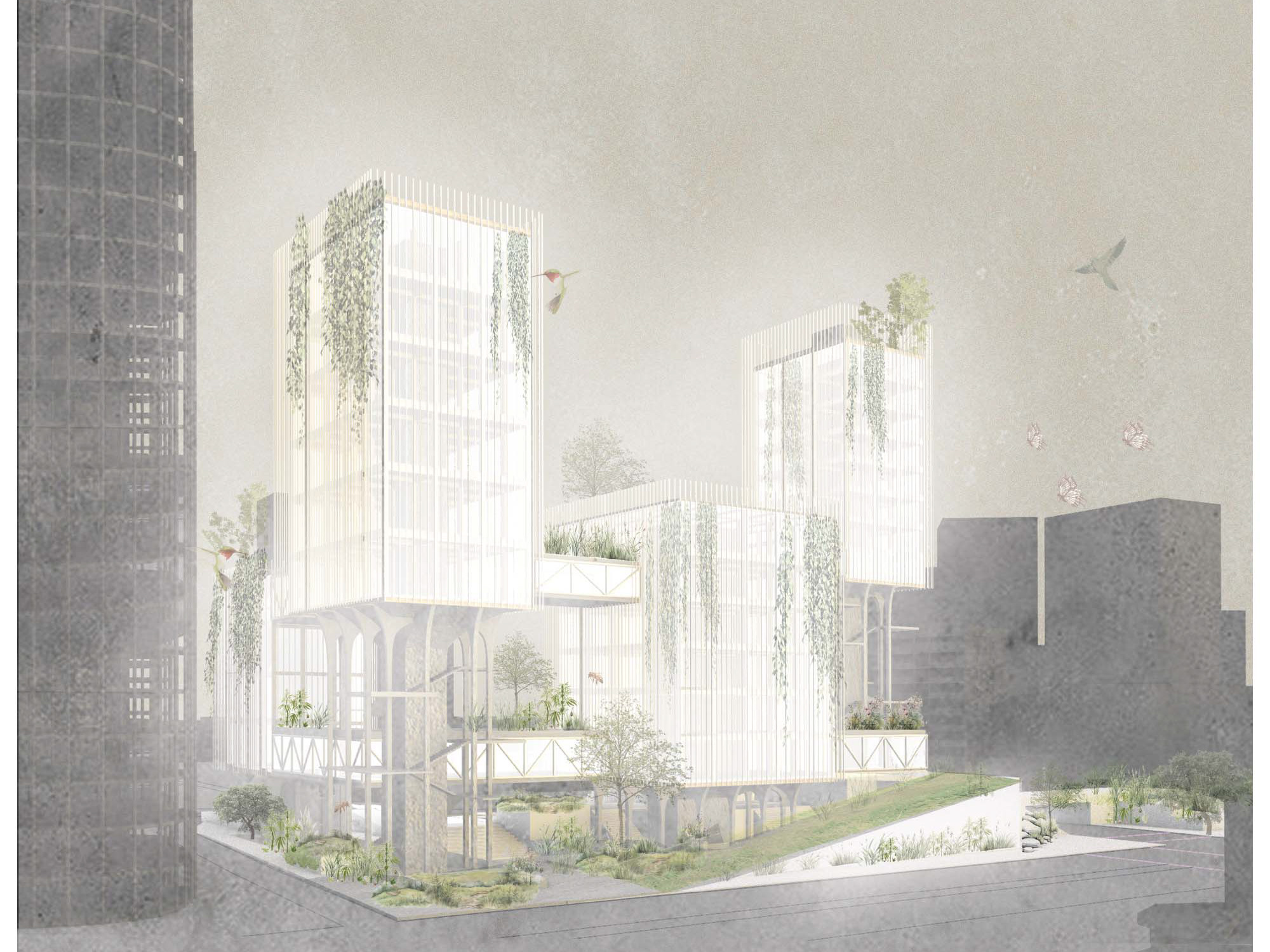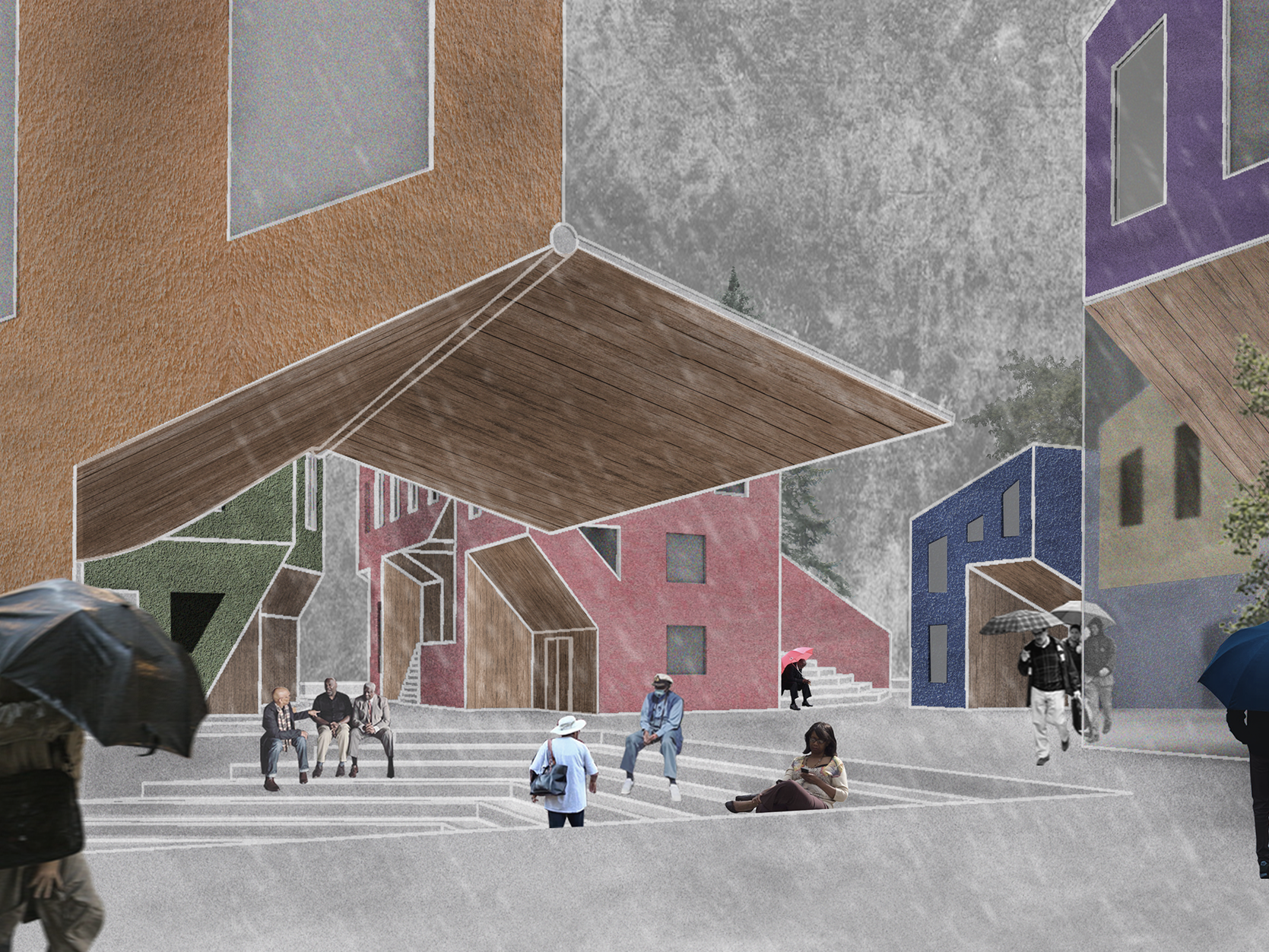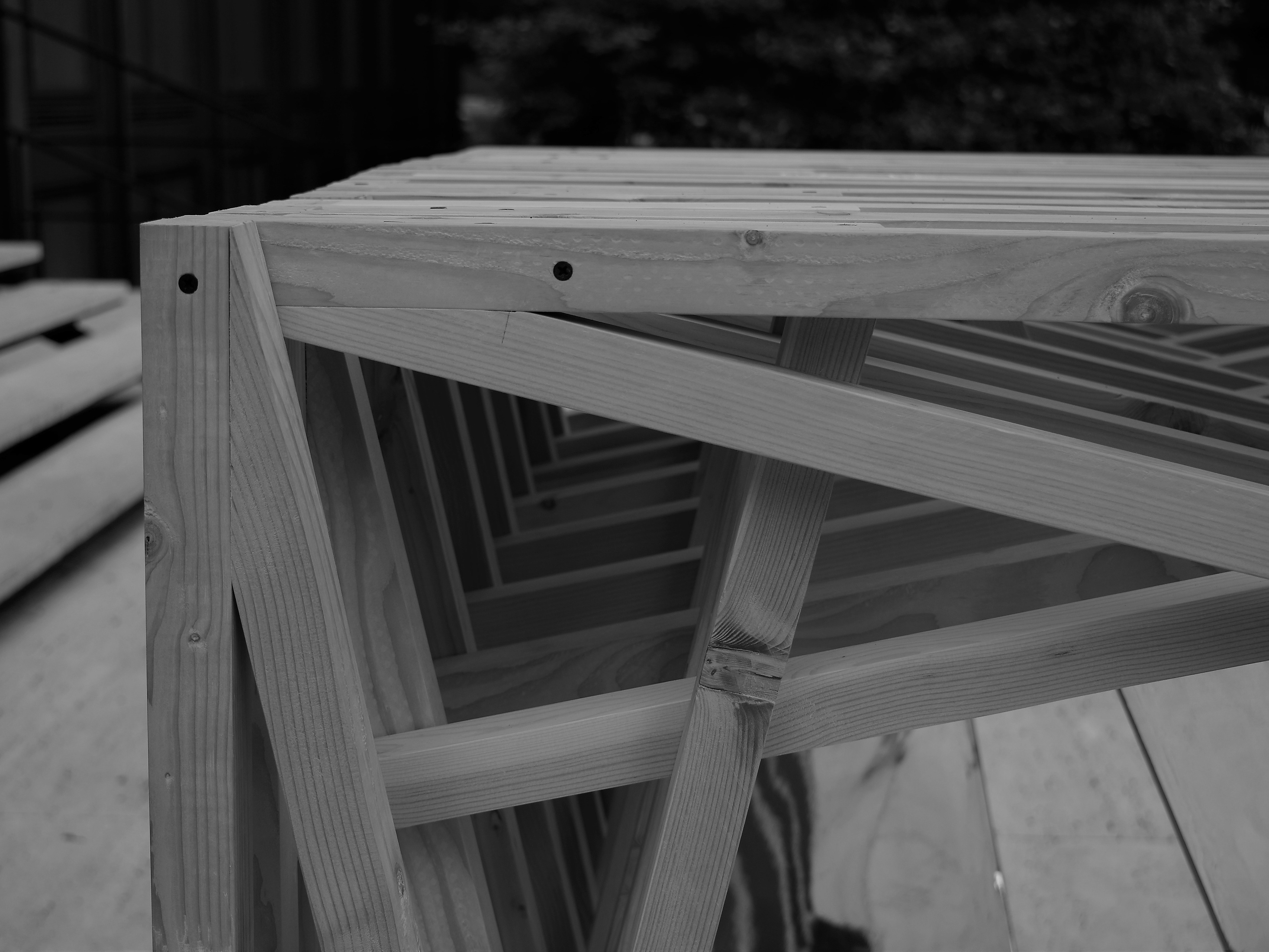Chega de Saudade : Ordem e Progresso
Cornell AAP Class of 2024 - Charles Goodwin Sans Thesis Medalist
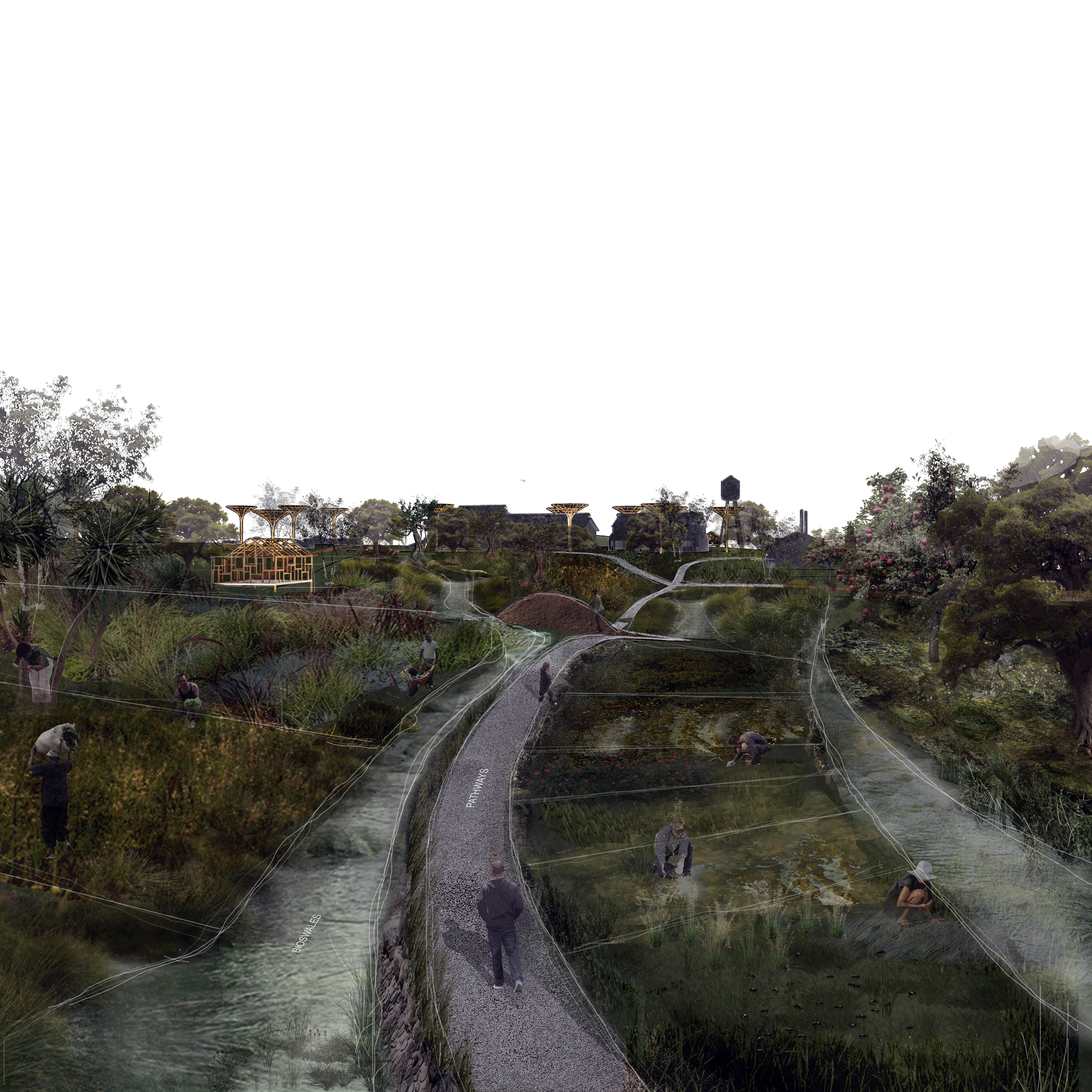

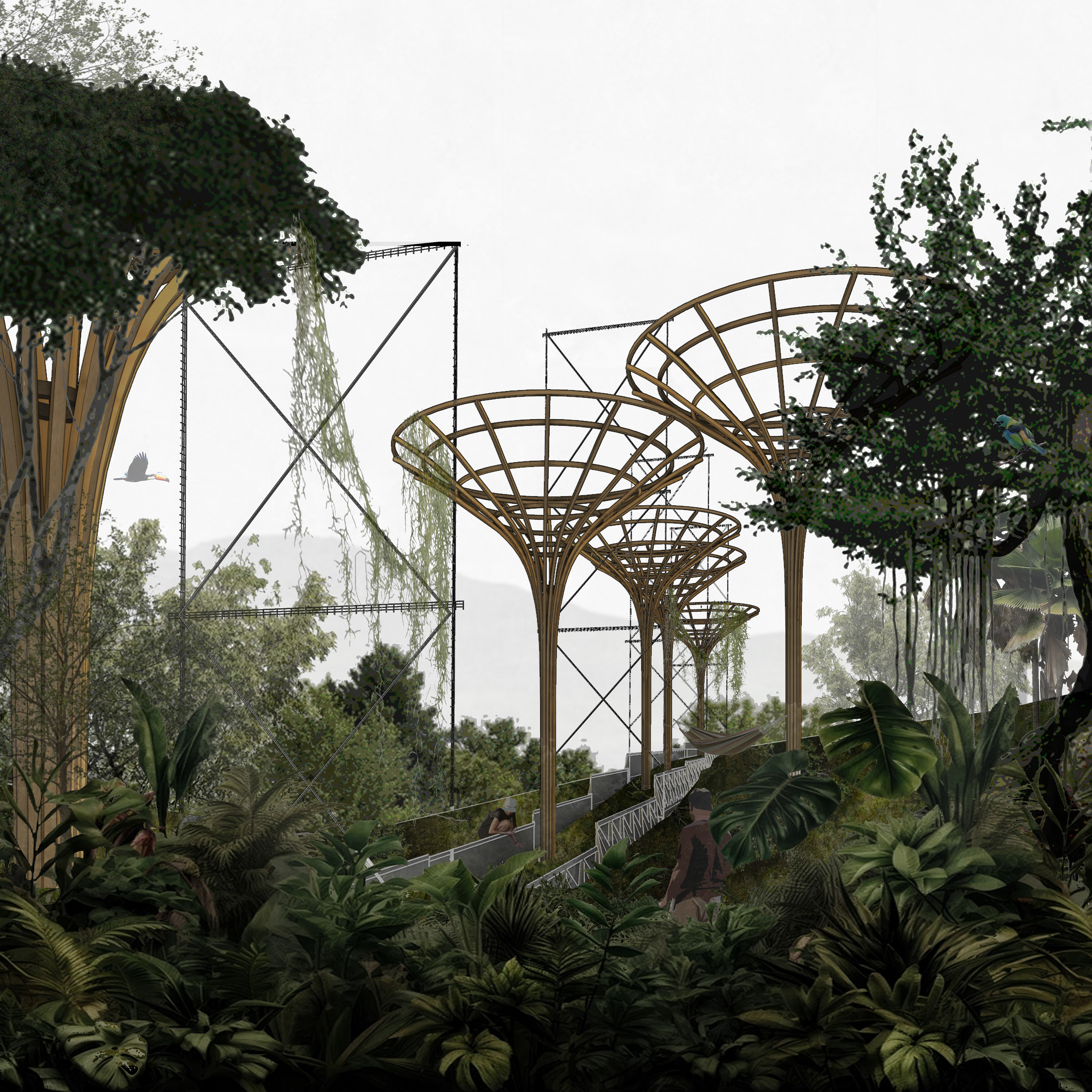
Since 2017, the Amazon Rainforest has gone from being a carbon sink to omitting more carbon than it absorbs. This thesis traces the colonization and modernization of Brazil and its forests, antagonizing the modern-day agricultural practices of monoculture. In this thesis, I am rejecting the other-ing of “nature” and recognize the role it has played in constructing racist ideals in portraying nature as other than culture and progress that stemmed from the period of colonization, and through the continued modernization and self-colonization of Brazil and its Forests.
My thesis question is: Given Brazil’s complex histories of extraction and modernization, how does one begin to re-imagine versions of utopic modernities in the Amazon and the Atlantic Forest that have been left abandoned? How can we begin to subvert these structures that have led to the mass deforestation of the Amazon so that they begin to remediate the very soils that sustain us?
I began my research in connecting these sites through these broader systems by mapping all of the systems, highways, agriculture land, soy production, indigenous land, and the existence of terra preta and its connection to archaeological sites. These are infrastructural, land ownership and land management documents found through the Brazilian geological survey.
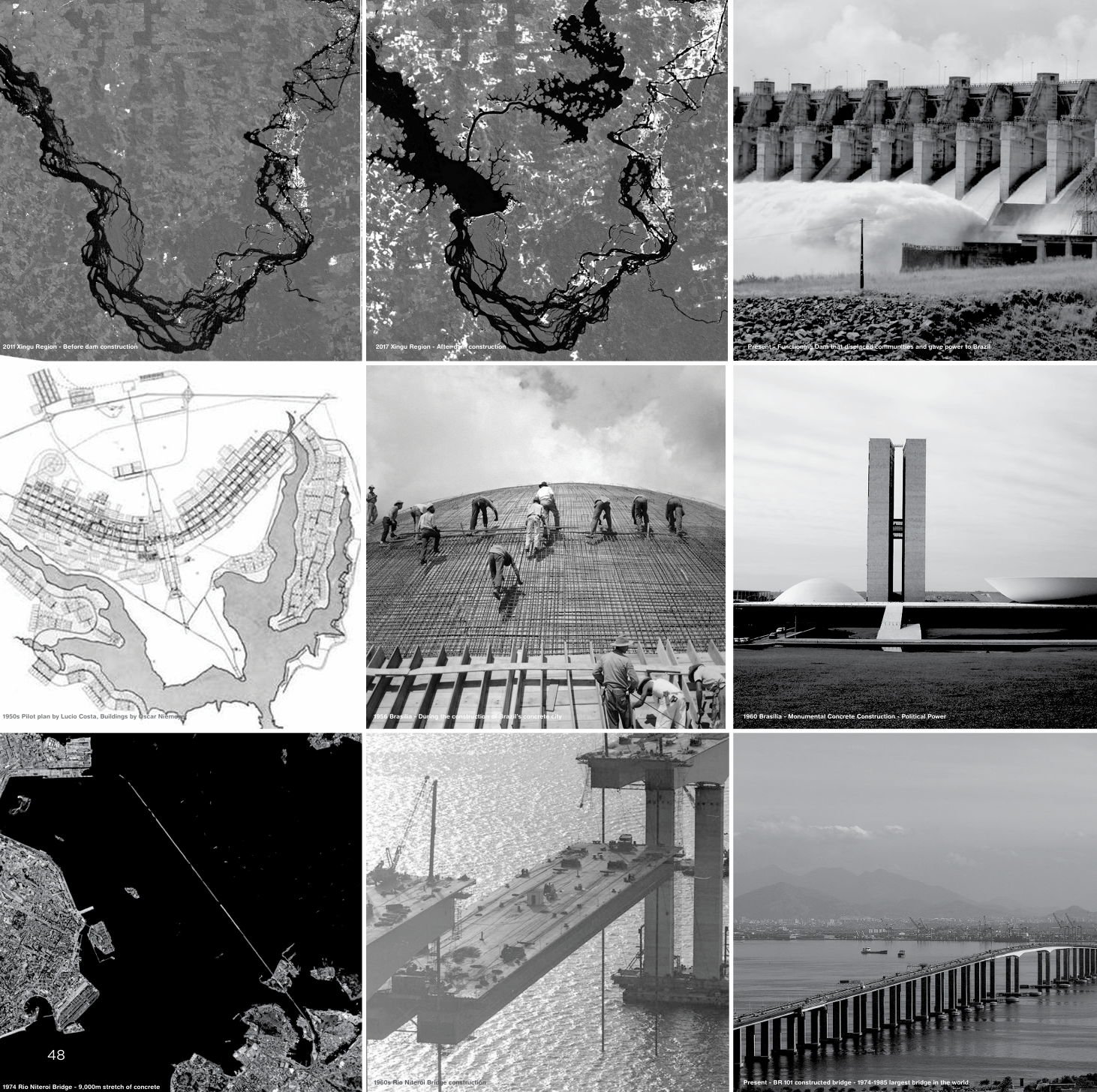

CONCRETE AS A MEASURE OF "PROGRESS"
EXTRACTION FROM BRAZILIAN SOILS
SOILS
The soils of Brazil are very low in nutrients and high in iron which is where it gets the red color which are called ferrasol. The three images to the left display pictures of the ferrasol and their bright color. In the Amazon, this soil is classified as a clay-rich oxisol. The diagram to the left shows how the nutrients are absorbed through the shallow topsoil and leaf litter layer. The nutrients are then transferred through the deep root network and the fungal network rapidly, not leaving any nutrients in the soil itself while still harboring all of the rich plant life of the forest

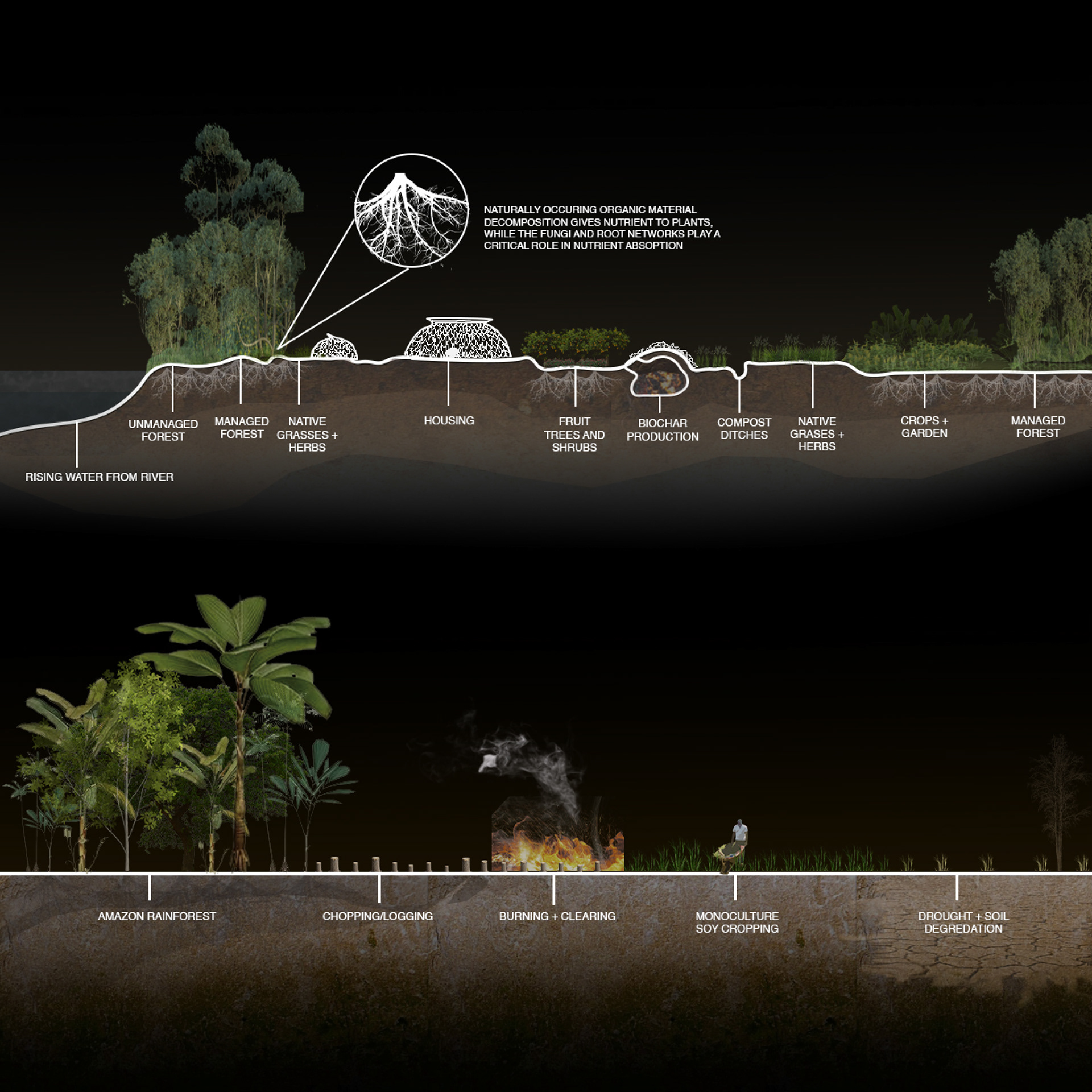
SITES
This proposal begins by the conceptual, theoretical and material connection between the three sites: Petrobras Viaduct, Terra Preta, and Fordlandia. The proposal outlined in this thesis is a profound exploration into the intricate relationships between history, environment, and human intervention, particularly focusing on the Brazilian landscapes of the Atlantic Forest and the Amazon. Rejecting the notion of “othering” nature, the thesis embarks on a journey to reimagine utopian modernities within these exploited regions, which have endured the scars of extraction and modernization. Through a meticulous examination of three distinct sites — an abandoned highway in Caraguatatuba, the terra preta soil in the Amazon, and the remnants of Henry Ford’s failed city, Fordlandia — the research unveils layers of exploitation, displacement, and ecological degradation.
Central to the thesis is the concept of remediation, seeking to heal the wounds inflicted upon the land by soil practices. From repurposing concrete structures to reclaiming stolen territories for indigenous communities, the proposal envisions a future where architecture and agriculture intertwine harmoniously, revitalizing the soils and ecosystems. By weaving together narratives of indigenous knowledge, architectural innovation, and ecological stewardship, the thesis advocates for a paradigm shift, where the reclamation of land is linked with the restoration and reactivation of cultural practices and ecological balance. Through this endeavor, the thesis aims to foster a deeper understanding of the intrinsic connections between human societies and the environments they inhabit, paving the way for sustainable futures rooted in respect, reciprocity, and regeneration.
SITE 1: PETROBRAS VIADUCT
The Petrobras Viaduct is a 300M long abandoned stretch of unfinished concrete highway originally meant to connect Rio and Sao Paulo. The viaduct emerges as a haunting symbol of abandoned ambition, its concrete expanse looming over the verdant expanse of the Atlantic Forest near Caraguatatuba—a testament to the hubris of progress unchecked by ecological wisdom. The Petrobras Viaduct is a ghost of the extraction networks that have continued to deforest the Amazon and the Atlantic Forest in Brazil throughout history and still do to this day.

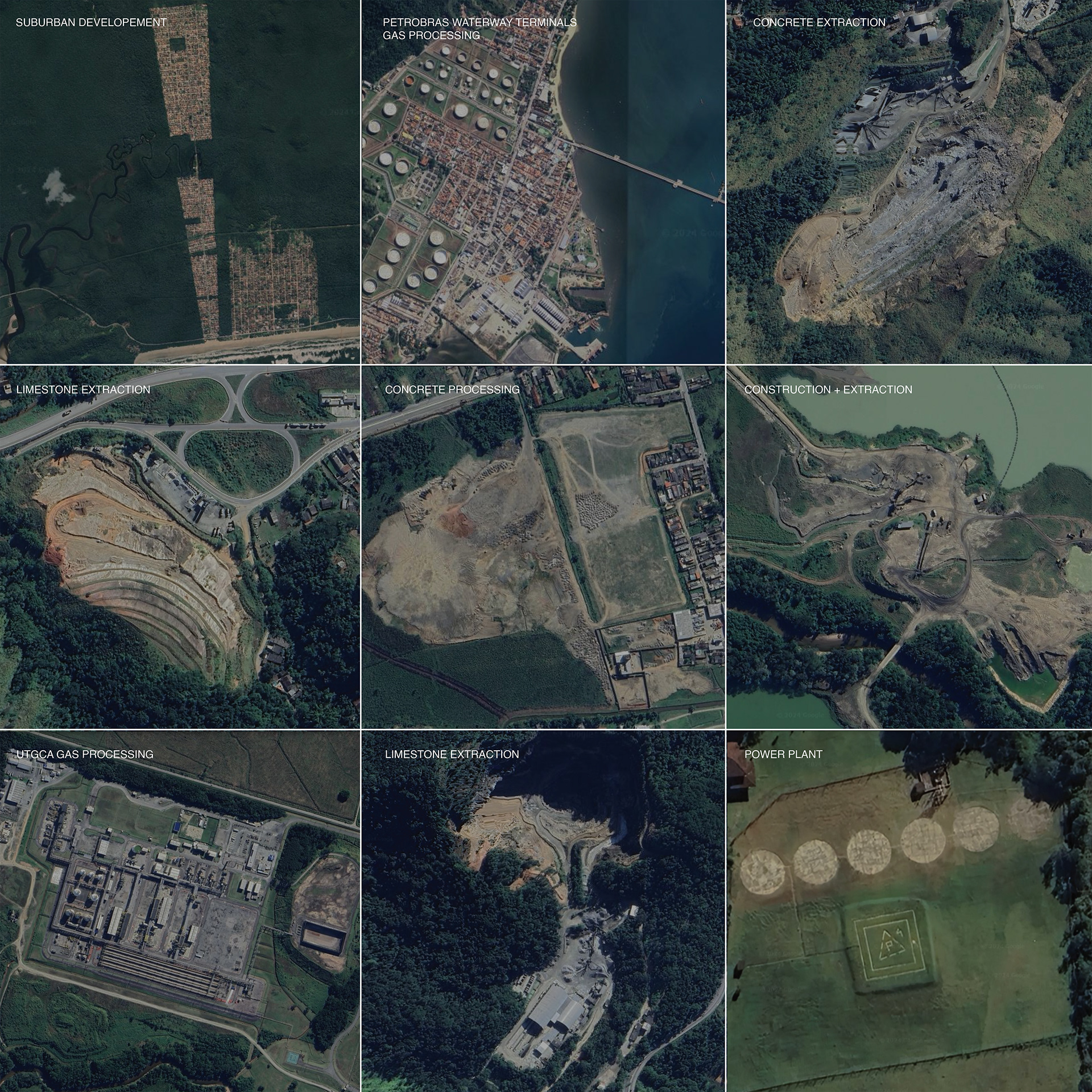

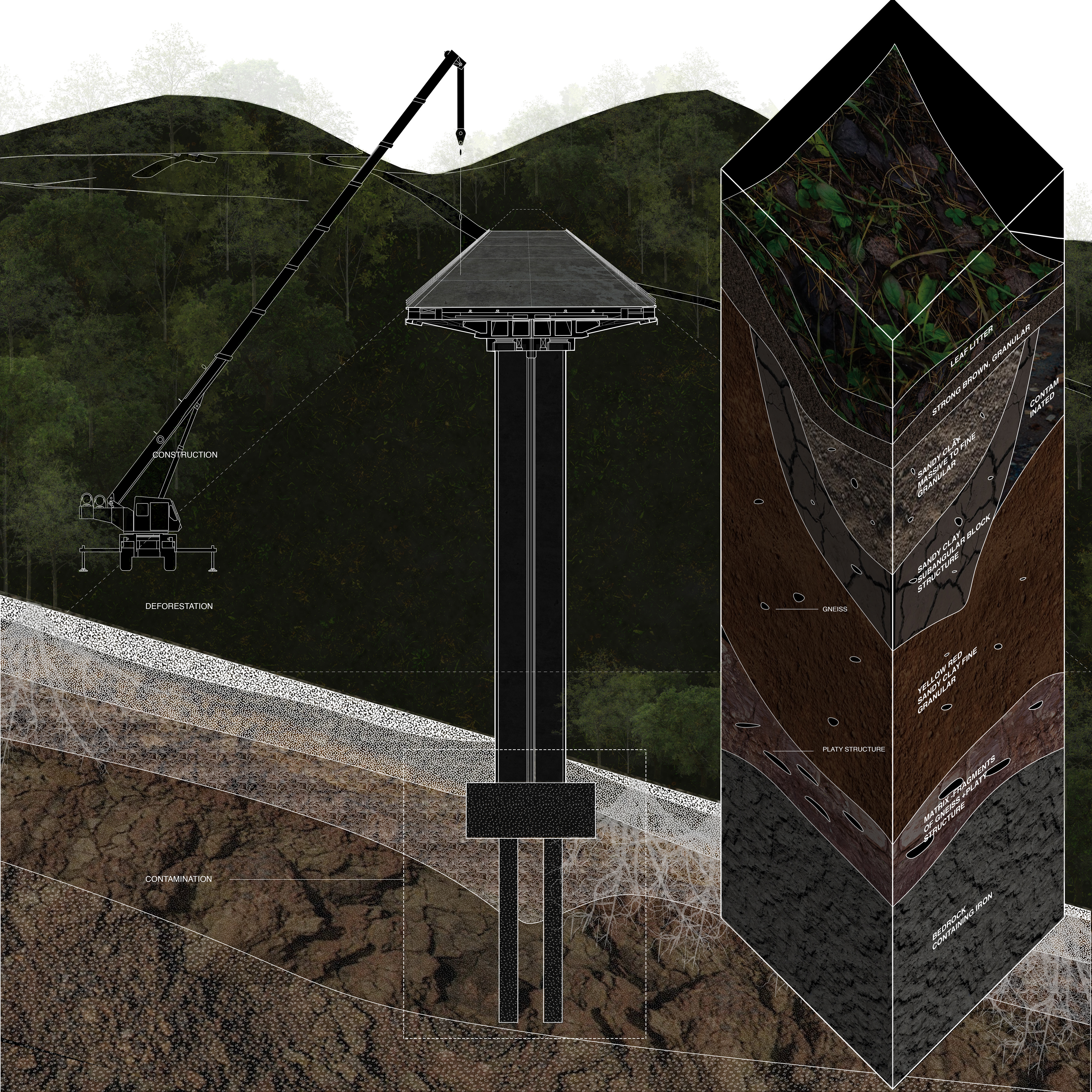
SITE 2: TERRA PRETA
Terra Preta, a fertile soil abundant in nutrients, is a remarkable find amidst the typically nutrient-poor soils of the Amazon. Created through a process of composting, biochar incorporation, and agroforestry practices, this soil is not only found within the confines of geoglyphs but also in various other archaeological sites and in existing indigenous communities to this day. These sites bear testament to the ingenuity of indigenous communities, who actively manipulate and nurture their surrounding forests to cultivate this fertile soil.
The archaeological civilizations and LiDAR imagery have been linked to the presence of terra preta, This is a form of archaeological evidence of agro-farming in these metropolises that the current practices date back 10,000 years. These soils are enriched with artifacts, fish and animal bones as compost in the nutrient poor Amazonian soil. The land and soils themselves hold knowledge of its past. These soils have heightened levels of Nitrogen, Potassium, and Calcium and other nutrients from composting and bio char added to the soil, as well as agro farming.
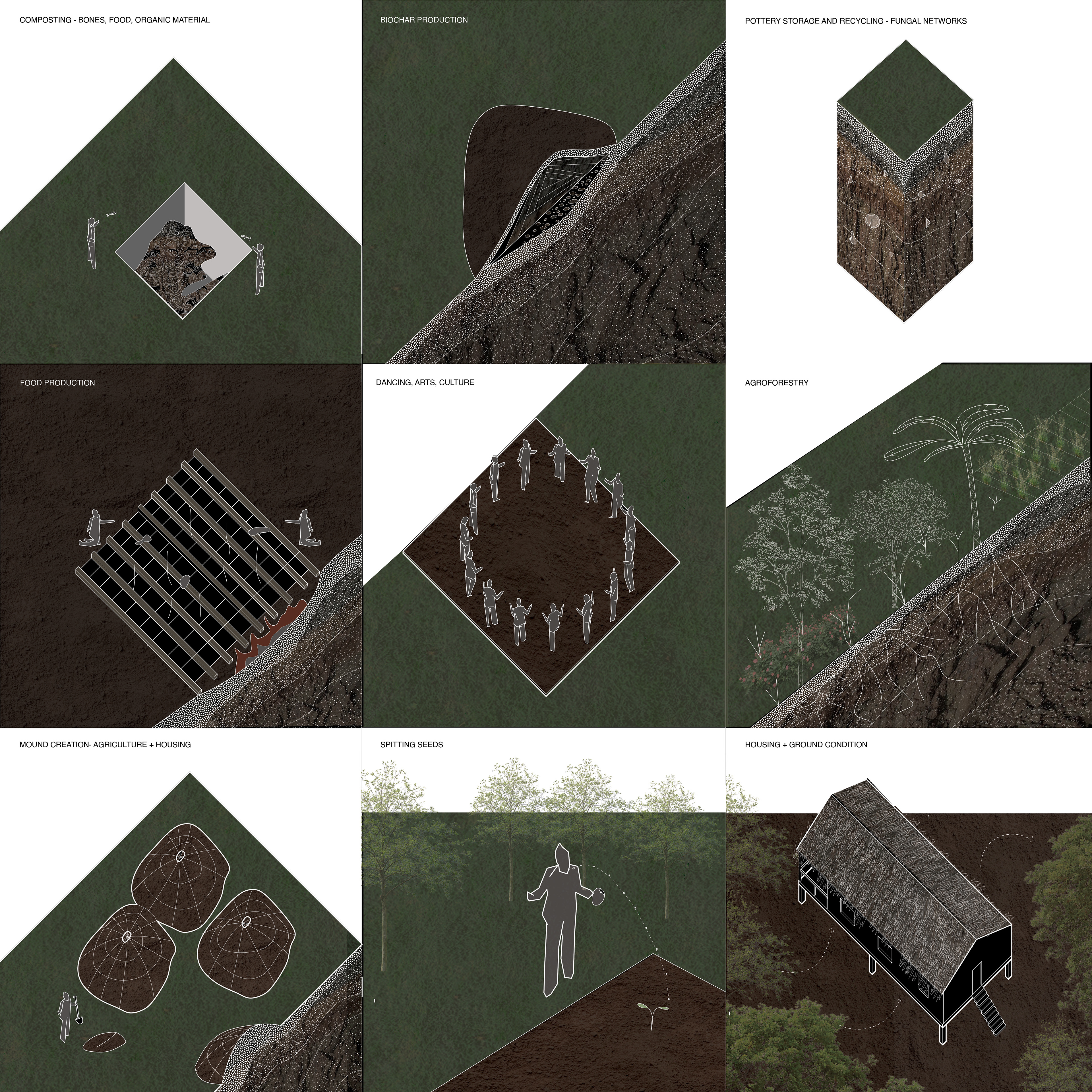
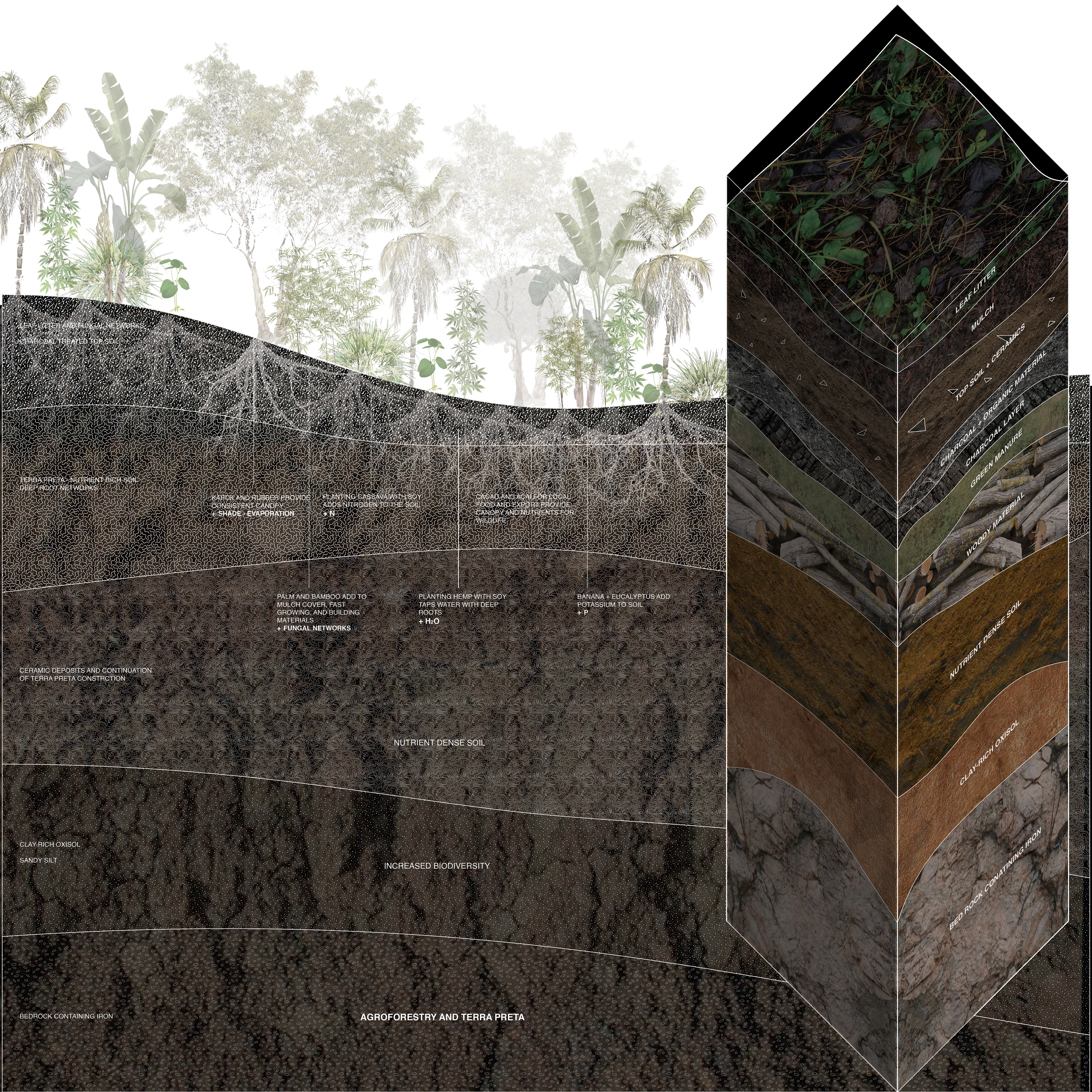
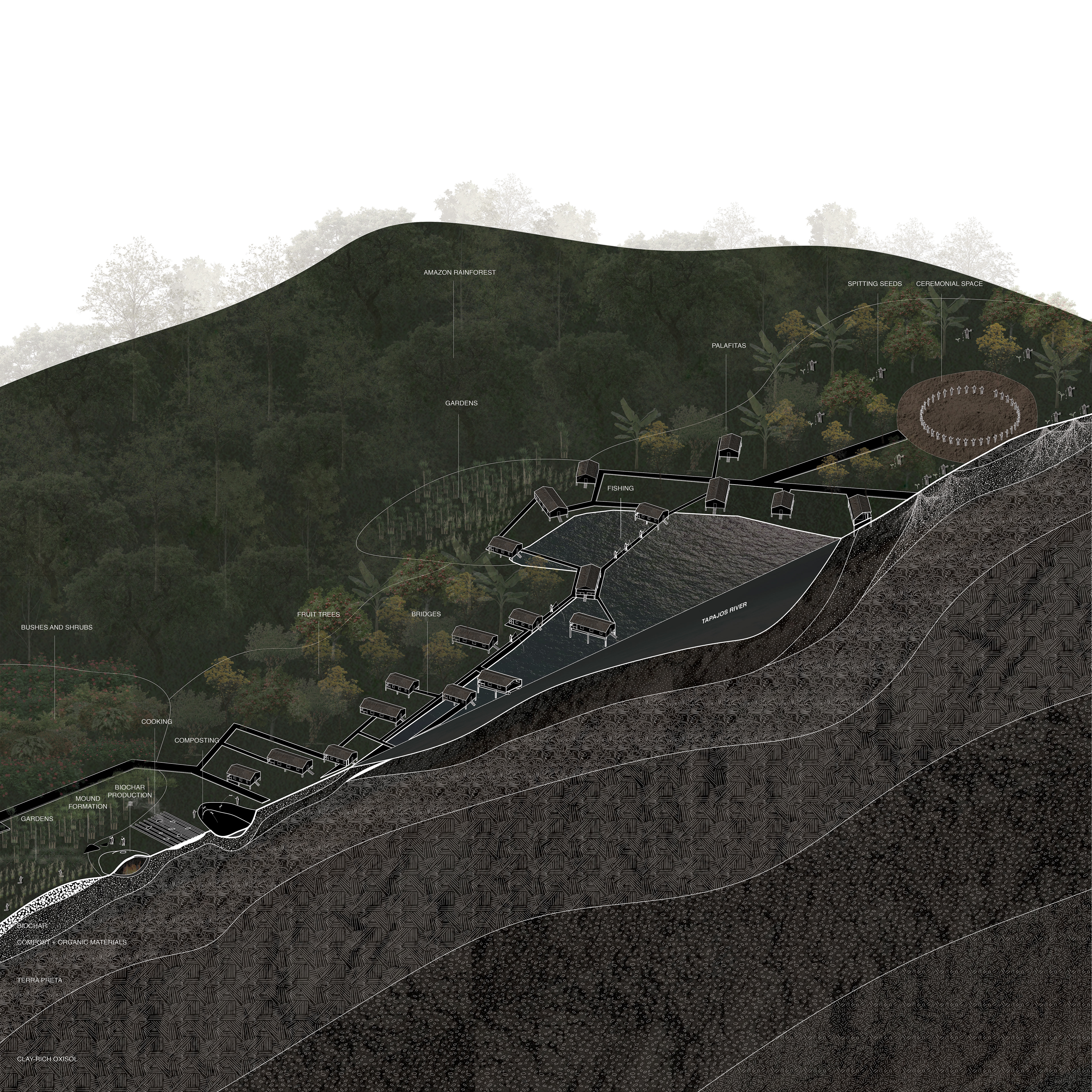

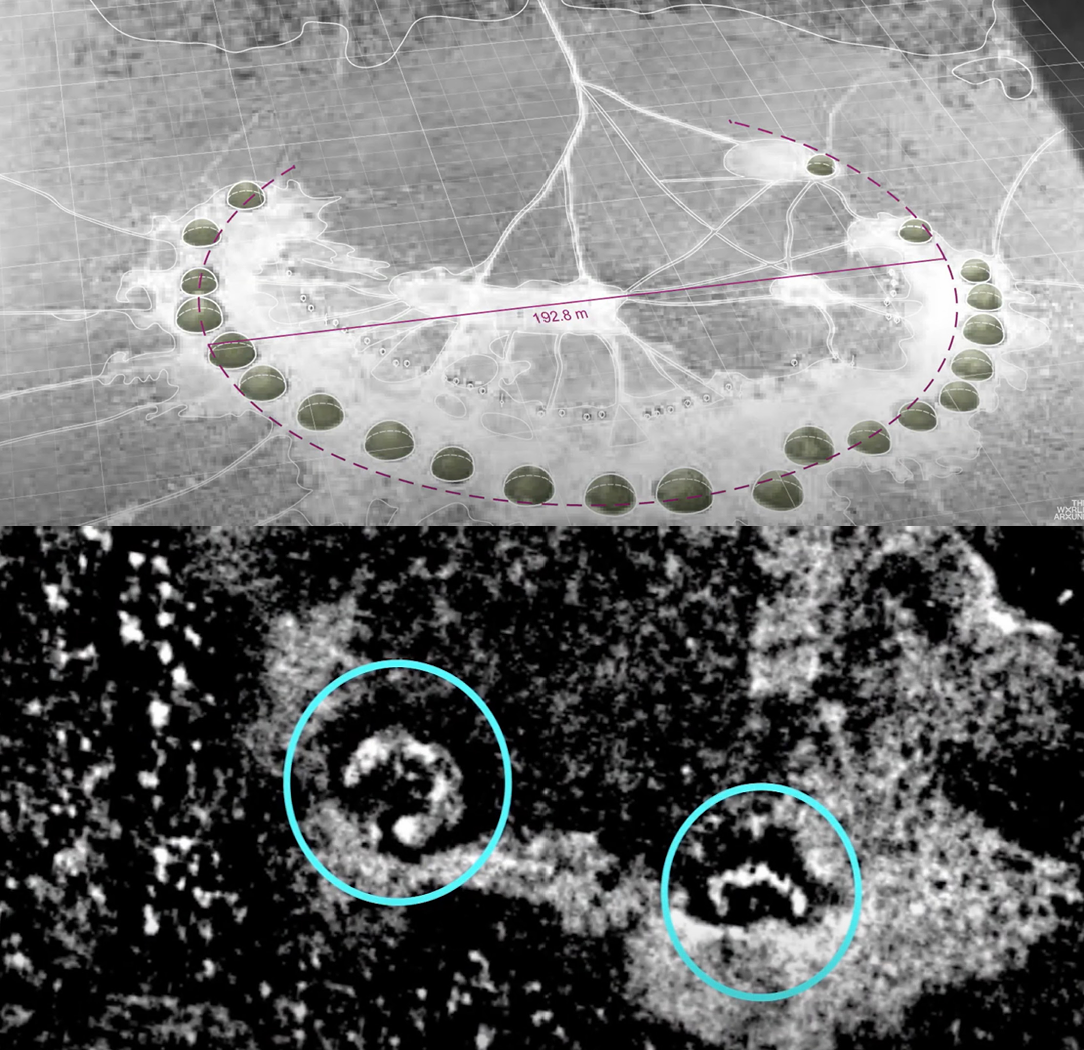
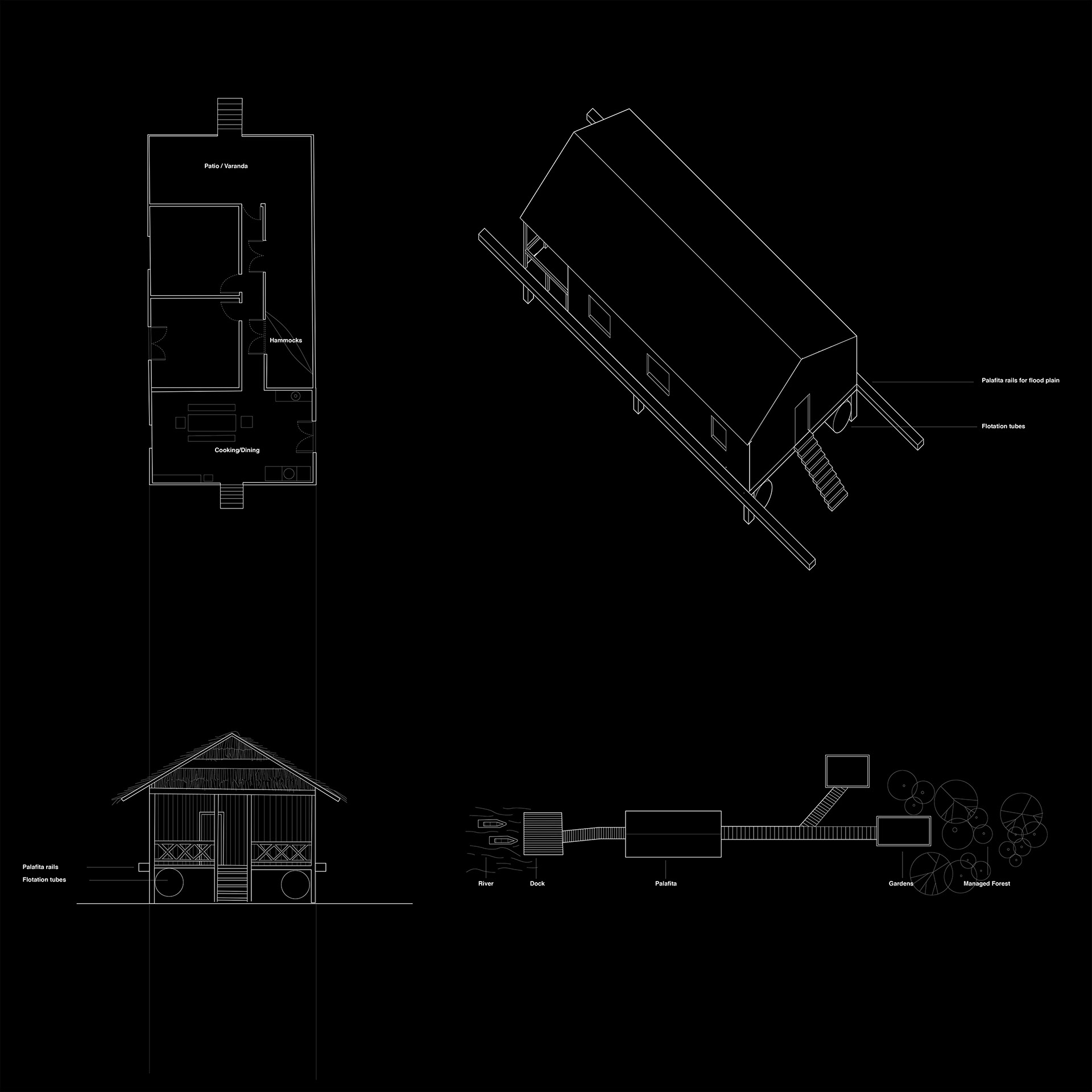
SITE 3: FORDLANDIA
Fordlandia, once envisioned as Henry Ford’s utopian American suburban enclave amidst the Amazon Rainforest, stands today as a symbol of modern ambition gone awry. Constructed with the purpose of extracting rubber for Ford’s expansion, this failed venture remains nestled in the heart of the rainforest, a testament to the complexities and challenges of industrial expansion and extraction by foreign powers into these forest territories that neglect native strategy. The city is now almost completely abandoned and in a state of ruin, yet it’s remains have continued to promote monocultural expansion in its vicinity.
Just to the south of the site, there is proof that terra preta once belonged on these lands and have been erased by the practices of these monoculture cities. These are traces of a constructed forest. A circle of ipê trees (yellow and purple flowering trees), land formations and manipulations prove the existence of terra preta formation in the land that is now called Fordlandia, which was built on stolen land that displaced its original inhabitants.
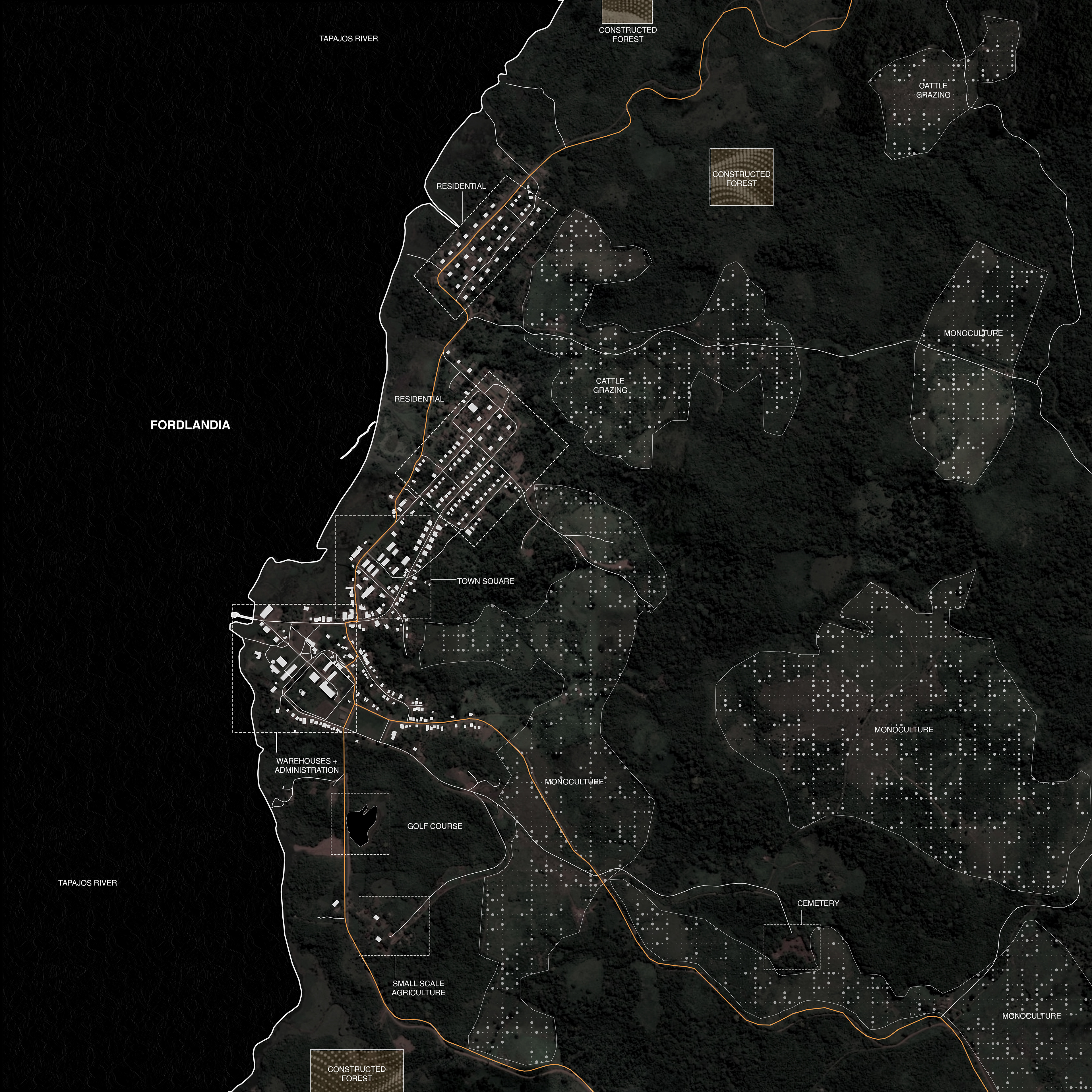
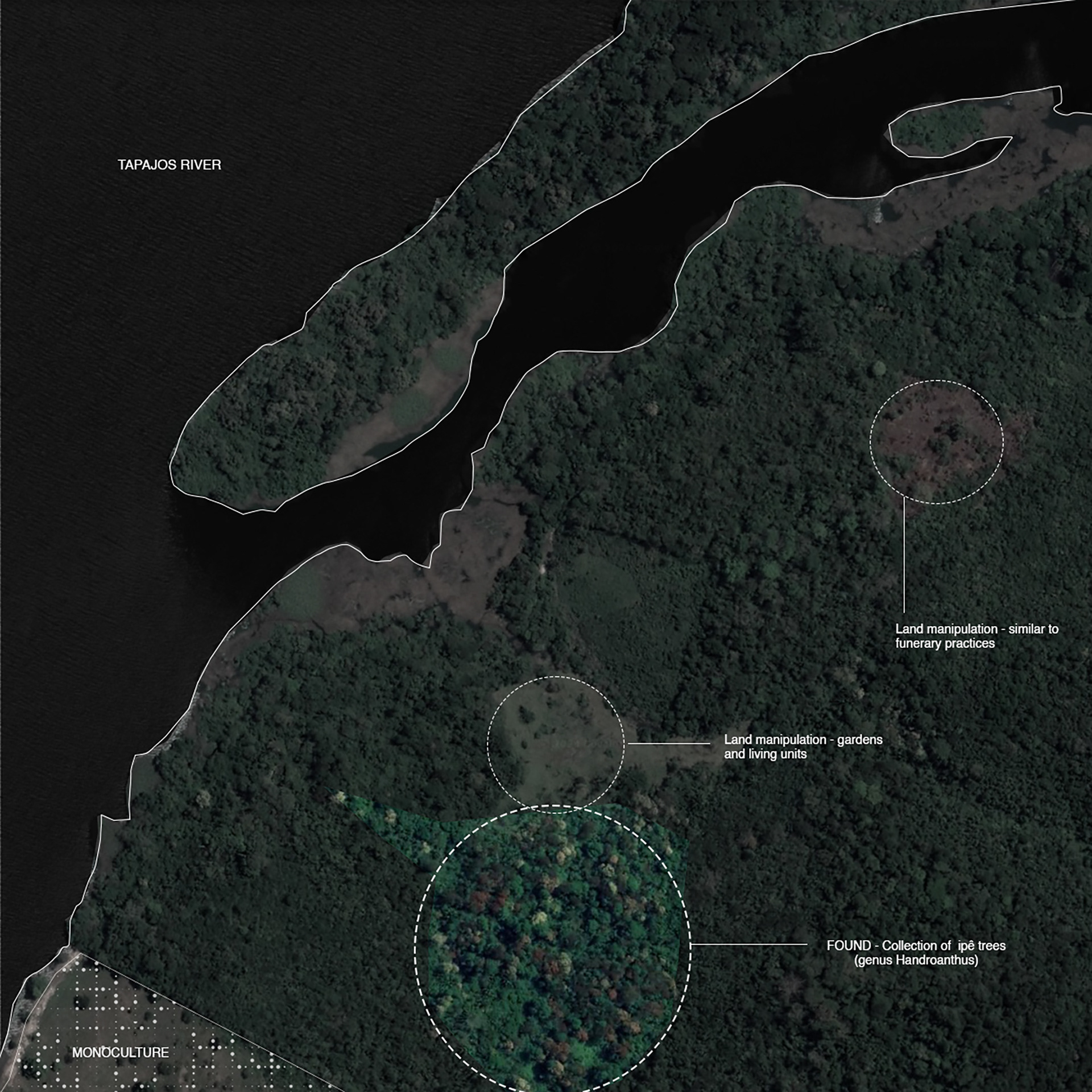


REMEDIATION: PETROBRAS
To remediate the soils of the Petrobras viaduct site, I first looked into the way in which this viaduct was constructed. The construction of these massive infrastructural projects in Brazil became a national and global spectacle, and the construction of these structures in such dense forests was an act of overcoming the forests.
By first studying how this viaduct was constructed, the decision was made to break down the viaduct into the component parts that were used to construct it: tension wires, pillars, concrete slabs, and rails. By deconstructing the viaduct into its component parts, this action takes away the power that has caused so much harm, and subverts the existing pieces into an act of remediation. Using the very pieces that caused the disruption in order to fix the problem is both a symbolic act as well as a material-conscious choice.
To remediate the soils of the Petrobras Viaduct in Caraguatatuba, the concrete slabs become barriers that are used to contain the contaminated soil up to the water line. A geomembrane caps the contaminated soil, and the concrete from the pillars are ground and processed to become engineered fill, a typical engineering process in concrete reuse for remediation projects. New plantings and tree starts are placed where the viaduct once stood, and the fungal networks and plantings begin to cleanse and remediate the soils. The artificial canopy imitates the shade provided by a tree canopy, trapping the water in the forest and preventing soil evaporation, while also funneling rainwater directly into the soil. This architectural insertion rehydrates the water-depleted soils.
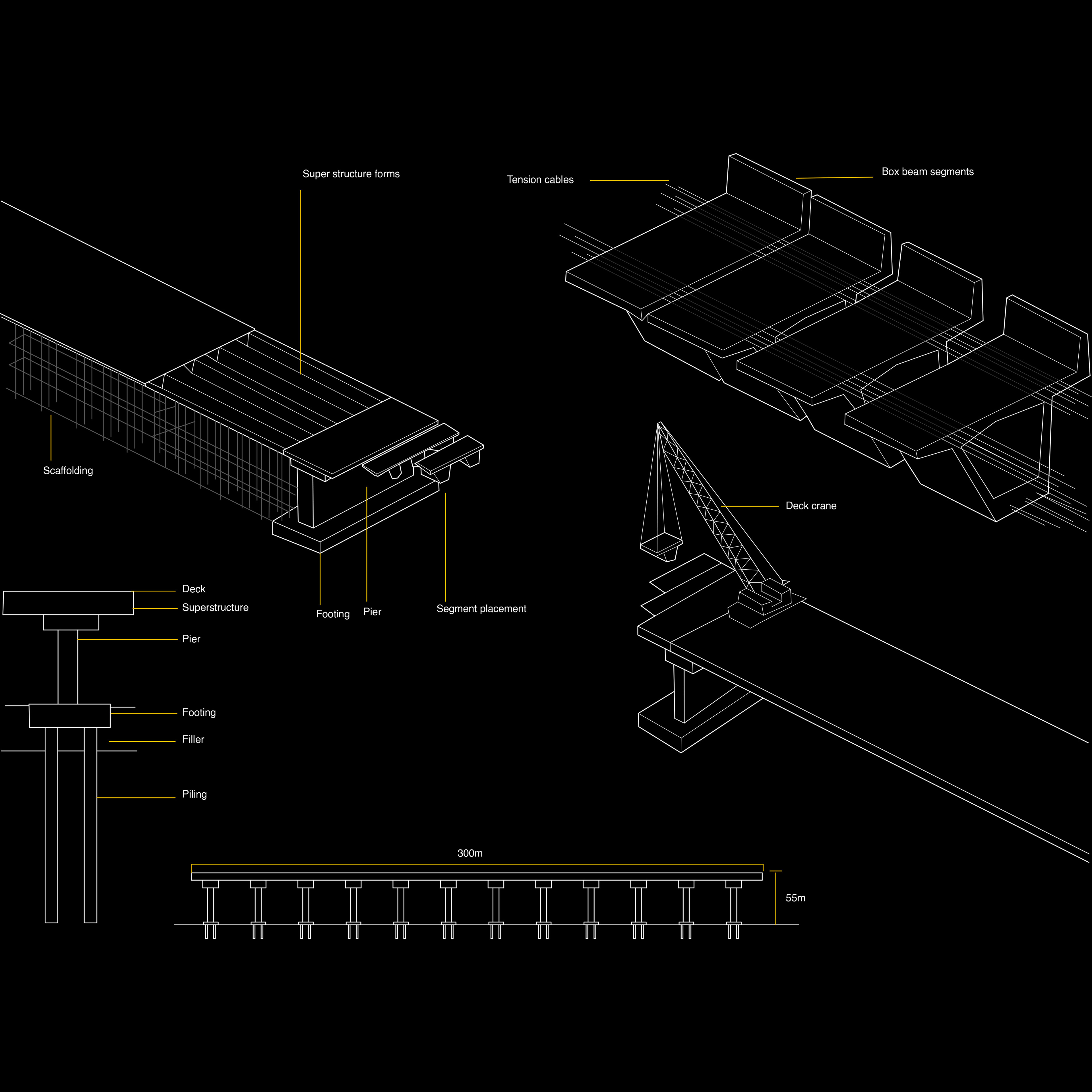


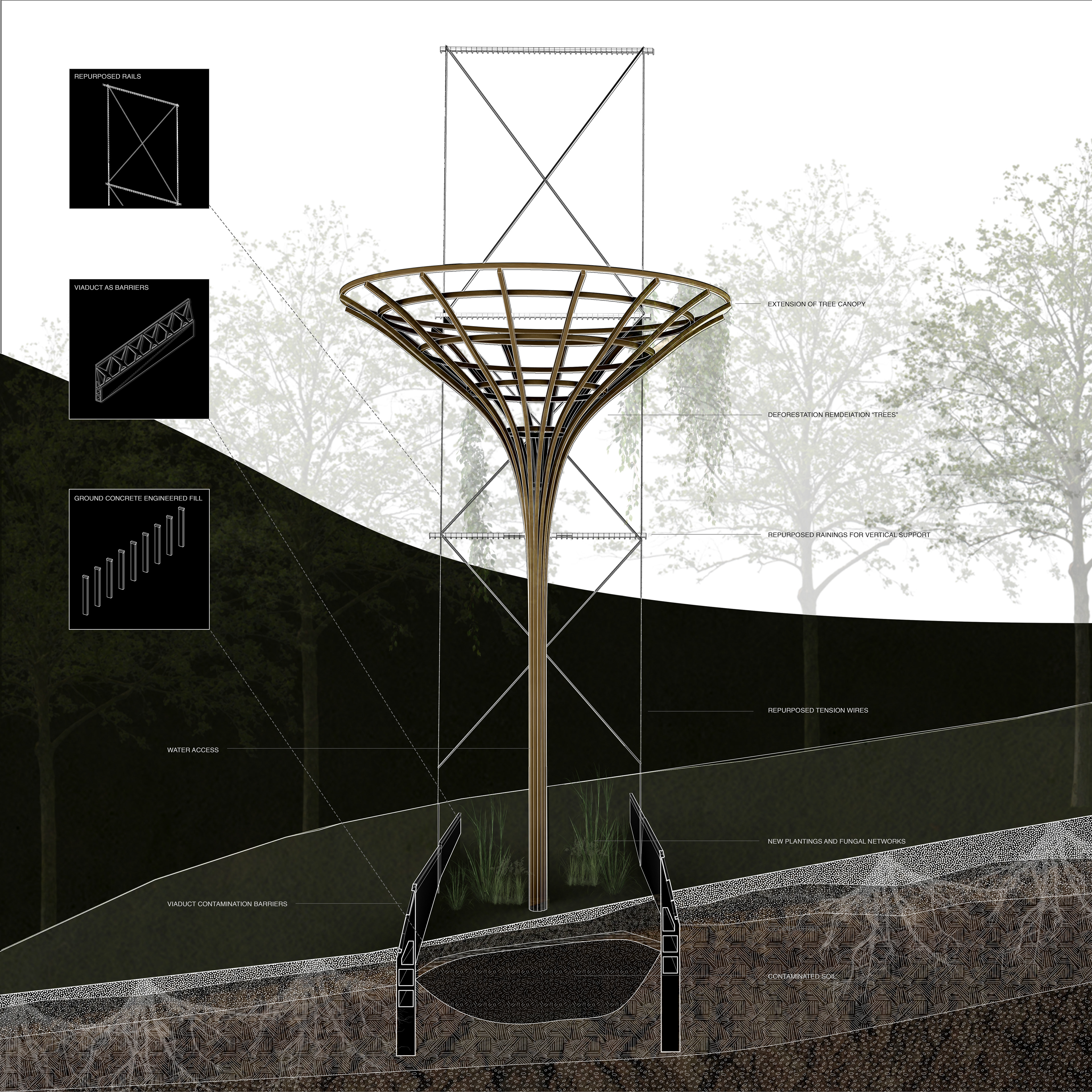

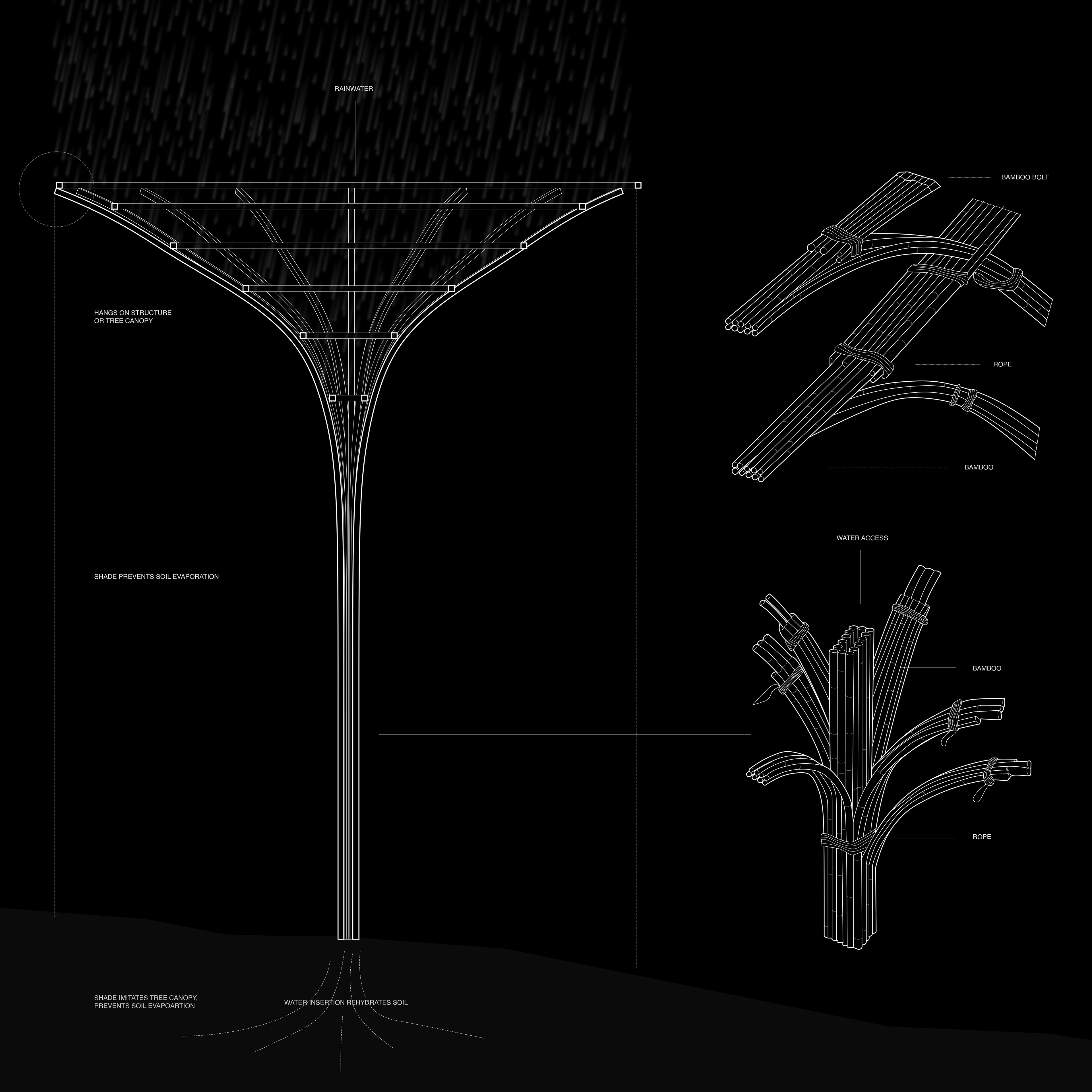
REMEDIATION: FORDLANDIA
In remediating Fordlandia, I am proposing that the stolen land is returned to the displaced populations of the regions and imagining what could happen if this were to take place. This imagines how the city would transform from being a factory city organized like an assembly line to a reactivation of these indigenous soil practices through the relocation and repurposing of its component parts in addition to architectural and landscape insertions that remediate the soil of this ruin of a failed extraction city in the Amazon.
The buildings in Fordlandia have been sites of exploitation, pain, suffering, death, and ecological disaster. This intervention also uses the existing pieces that caused the contamination and degradation of the soils in order to remediate them, while also leaving traces of this destructive and painful past, as a reminder of what has occurred. This imagines that some of these buildings would be moved, but some would be taken apart into its component parts and reused in different ways. (Re)location, (re)use, (re)clamation, (re) construction, and (re)pair lead to the (re) mediation of the land now called Fordlandia.
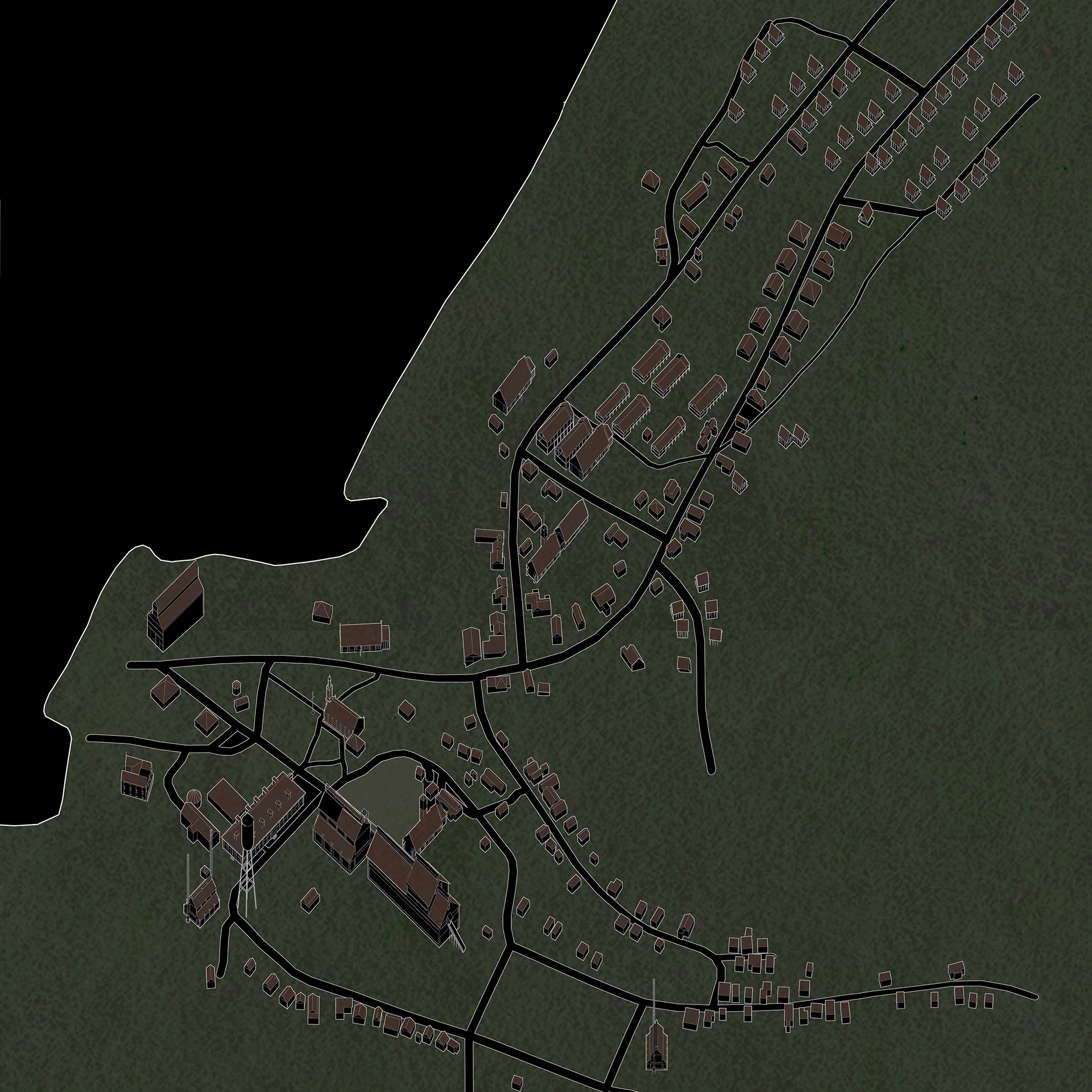

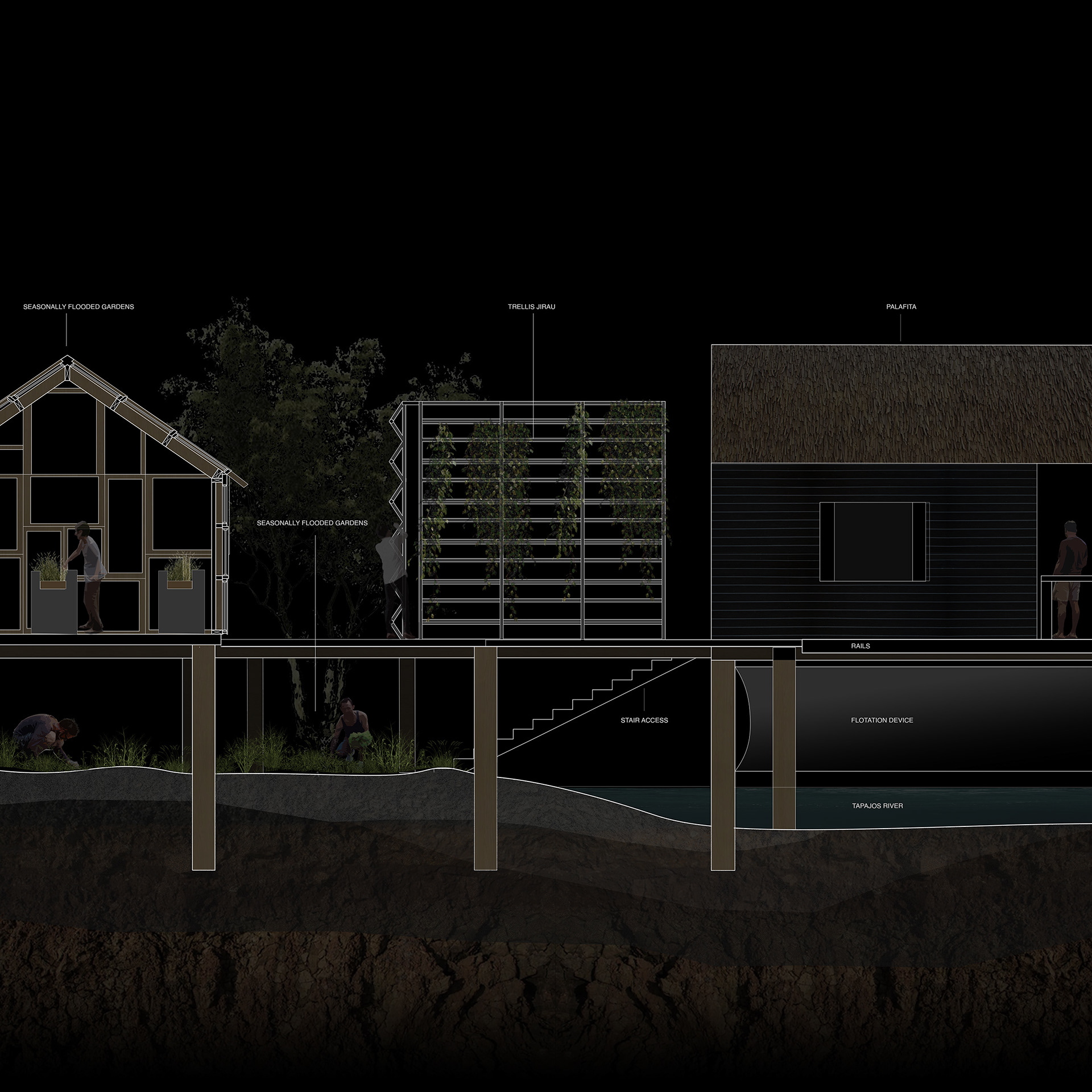

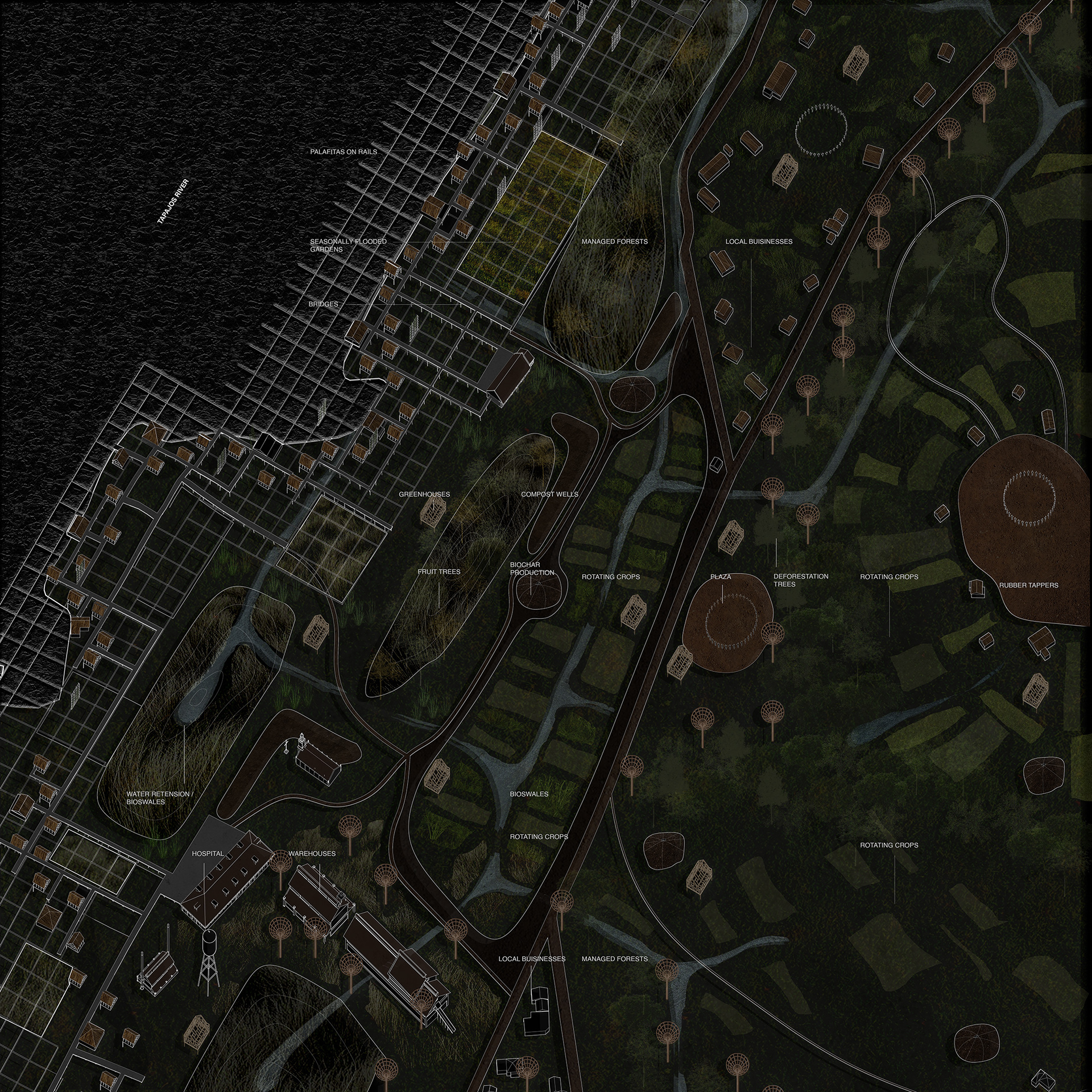
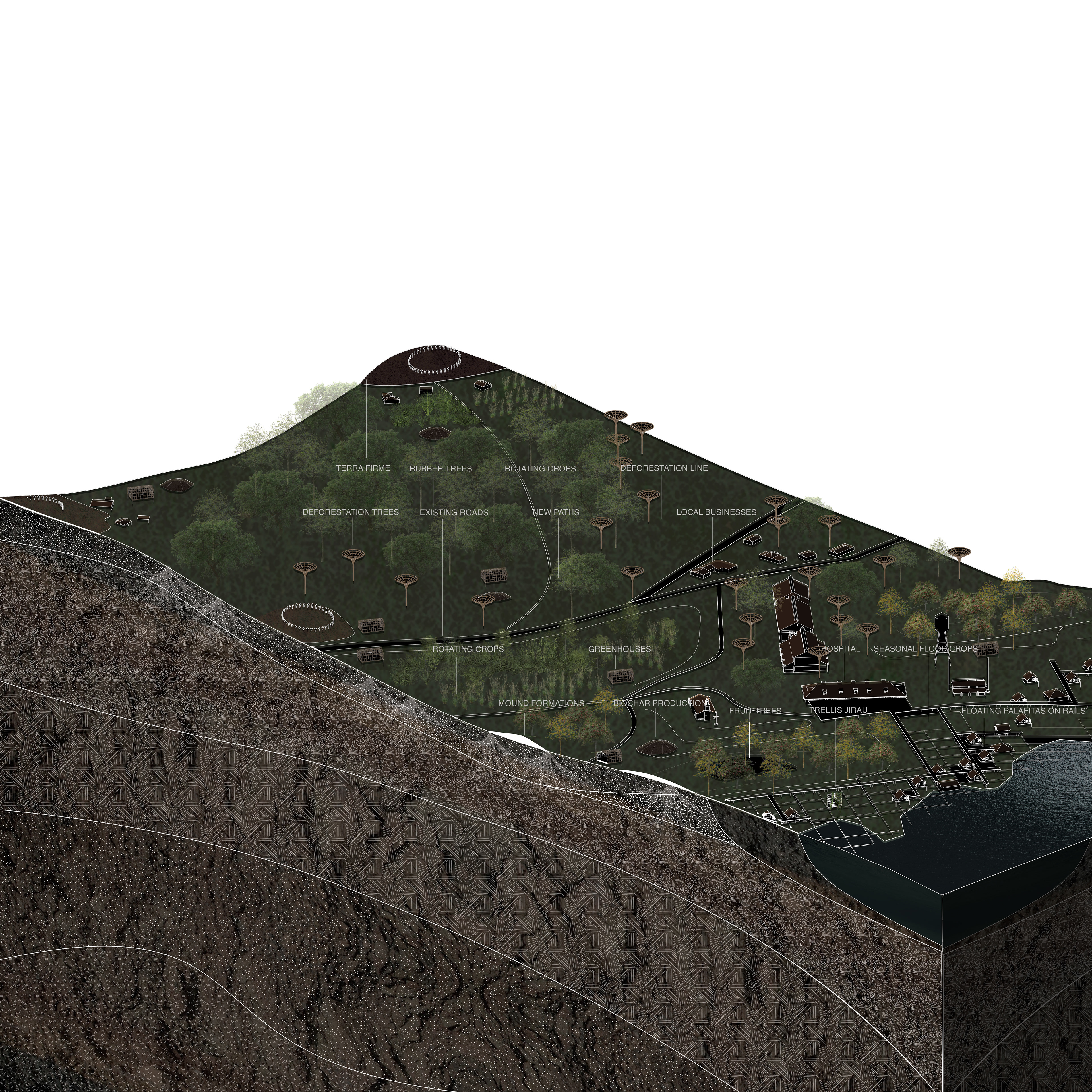
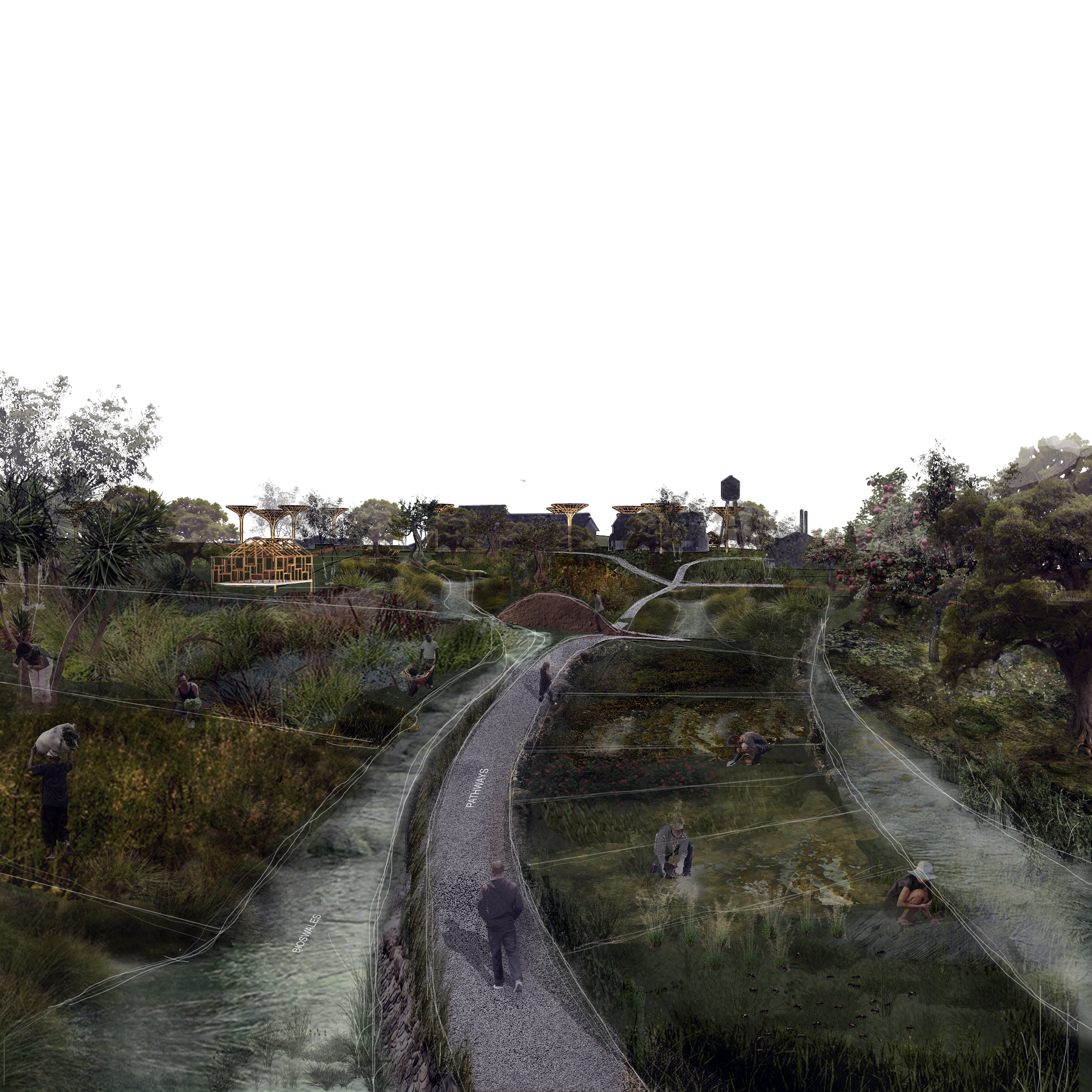
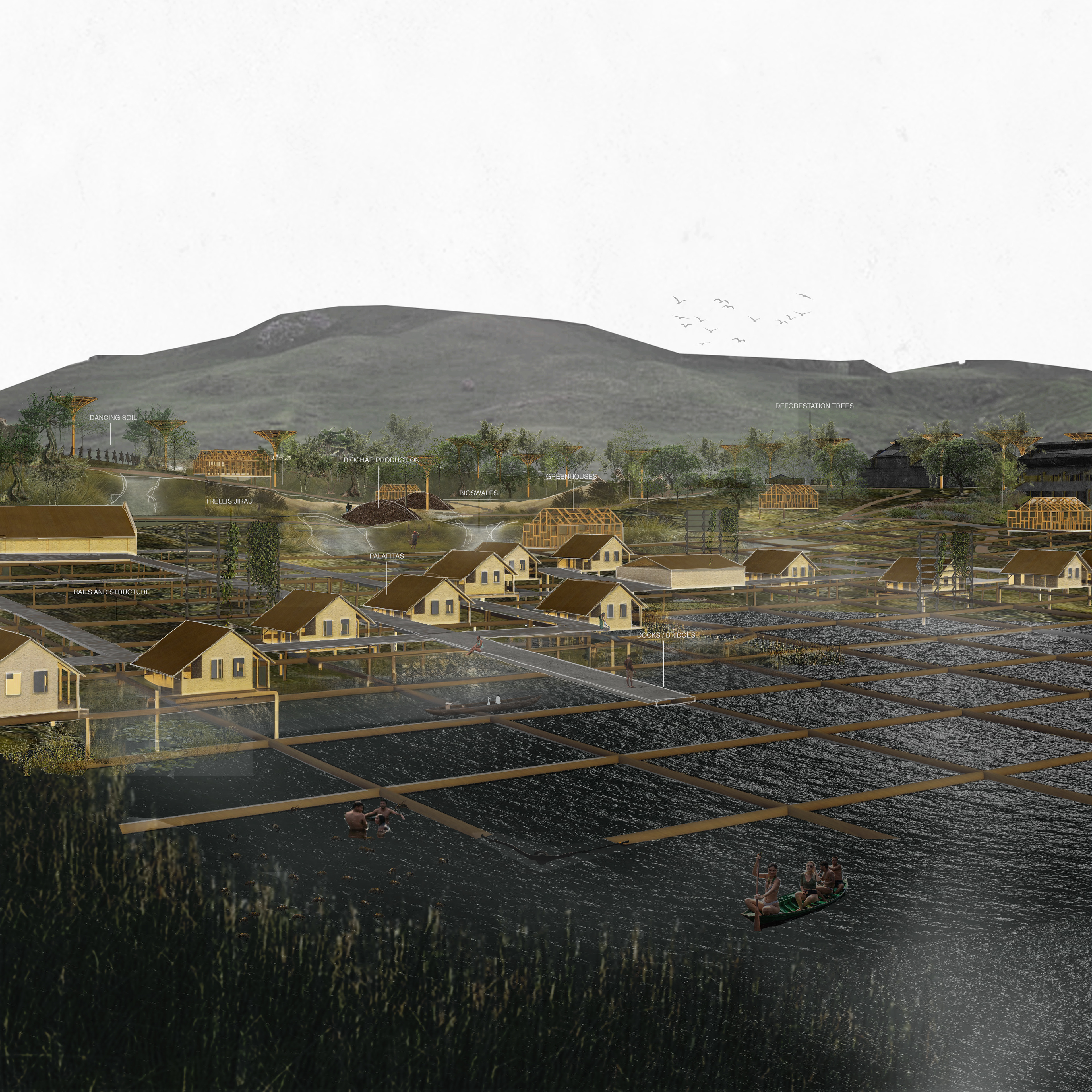
In this imagined future of Fordlandia if the land is returned, this plan proposes potential ways in which the buildings could be reorganized or repurposed, as well as the agricultural organization itself. Bioswales are organized to mitigate flood with rising water levels while also rehydrating the soil. Compost wells run along the rotating crops providing nutrients to the soil while preventing waste. Houses turn into palafitas and are placed on the river edge and on the hill tops for different forms of agricultural organization.
The way in which agricultural cities and communities are designed and built to function have a direct impact on the environment of the whole world. By narrating the stories of indigenous communities present in the Amazon today and the existence of an alternative that has been silenced and displaced, we begin to understand the role that architecture has played in this discourse. In this imagined future, Fordlandia rejects the othering of nature from culture, and embraces the ecology as culture. Life is not separate from ecology, life comes from and lives through it. Through these stories and imagined futures, we come to respect and protect these sacred lands that have been taken advantage of for extractive purposes.

